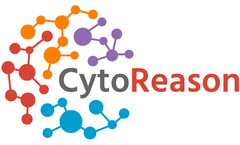Tissue Specific Articles & Analysis: Older
38 articles found
By introducing synthetic mRNA into the body, researchers can instruct cells to produce specific proteins that play critical roles in immune responses or disease treatment. ...
Nanobodies can be engineered to specifically target tissues or cells of interest by conjugating them to therapeutic agents. ...
Alternative splicing plays a significant role in various biological processes, including tissue-specific functions, cell signaling, and the regulation of gene expression. ...
Dendrimers can be designed with specific structures and functionalities that allow precise control of their properties, such as size, shape, solubility, and stability. Dendrimers can also be designed with targeting ligands that allow them to selectively deliver drugs or imaging agents to specific cells or tissues, perfecting their effectiveness ...
Nanoparticles are tiny particles with dimensions in the nanometer range, making them ideal for targeting specific tissues or cells in the body. In this article, we will explore different types of nanoparticle development that are revolutionizing drug delivery systems. ...
Incorporating recombinase technology into AAVs develops unique rAAV particles that can target specific DNA sequences. Substantial strides have been made in constructing rAAV particles to transport the recombinase components to the target cells. Studies have demonstrated impressive preclinical results, allowing for precise modification in specific organs or cell ...
Targeted liposomes Coating the surface of liposomes with hydrophilic polymers such as polyethylene glycol is an easy way to achieve targeted drug delivery, which tends to minimize subsequent uptake by the reticuloendothelial system and therefore Circulation time is longer for passive accumulation in cancer tissue. In addition, various active substances can be coupled to the ...
PROTAC antibody conjugates formed by coupling antibodies and PROTAC molecules can specifically degrade target proteins in specific cells, achieving the selectivity of PROTAC technology at the cellular or tissue level. ...
Cytokine Receptor-Targeting Chimeras (KineTACs) Due to limitations in lysosome delivery targeting chimeras, such as low modularity, high development difficulty, poor practicality, and limited tissue specificity, Professor James A. Wells' team at the University of California, San Francisco (UCSF) developed KineTACs. ...
Alternative splicing plays a significant role in various biological processes, including tissue-specific functions, cell signaling, and the regulation of gene expression. ...
Although TMB shows potential as a biomarker for immunotherapy in solid tumors, consensus on the optimal TMB threshold for specific tumor types remains elusive. Refining the TMB threshold could significantly enhance therapeutic approaches for certain refractory tumors. ...
Organoids are defined as three-dimensional structures grown from stem cells and composed of organ-specific cell types that can self-organize to recapitulate key and functional features of tissues in a dish. ...
Somatic variants present only in somatic cells and are tissue-specific, while germline variants are inherited mutations presented in the germ cells and are linked with the patient’s family history. ...
Enzymes are specific to reactions, and specific enzymes can catalyze specific chemical reactions. ...
The Challenge: With a drug in pre-clinical stage, our client was looking for the first indication to go into clinical ...
The Challenge: To understand the molecular effect of a ph-3 drug (Drug A) which showed moderate outcomes and to recommend next steps to increase response ...
Profiling mouse embryos using spatial-ATAC-seq delineated tissue-region-specific epigenetic landscapes and identified gene regulators involved in the development of the central nervous system. ...
Methylation flags are kept on tumorigenesis, akin to the tissue-specific traces that are acquired and maintained throughout development. ...
Furthermore, these results suggest that a vaccine-generated tissue-specific memory response significantly protects against HSV-1 immunopathogenesis. The mechanism by which VC2-intramuscular immunization results in the observed tissue-specific response is currently under investigation.' The work was supported by funds of the LSU ...
Active ingredients such as drugs are delivered into cells at specific tissue sites through endocytosis and other mechanisms. After the medical drug delivery is opened for application, liposomes have also gained more and more attention in the fields of food, cosmetics, etc. ...












